Explore some hobbies and lifestyles born out of the modern electronic music festival.
A central, if unspoken tenet of electronic music festival is self-expression in all things. This ranges from festival fashion to how people define themselves by where they stand in the crowd. Just as electronic music festivals are bastions of the extreme, so too have people taken small facets of festivals and turned them into robust ways of life in their own right.
Read on to learn about six subcultures that have emerged from the electronic music festival circuit.
1. Pin Collecting

These days, it’s literally impossible to go to a music festival and not see a plethora of lapel pins donned on hats, sold by vendors, or traded among festy fam. It can seem that on every head is a festival hat, and on every hat there’s at least half a dozen Rick and Morty pins.
Just as every other hobby is made of a spectrum from the casual to the hardcore, though, pin collecting is no stranger to the extremes. Small pins might cost an average of $5-10, while limited-edition artist pins cost $25-45 up front. “Aftermarket” collecting, however, is where things get really crazy; pins created by certain artists can easily exceed a few months’ rent in value.
Disney pin collectors are certainly no stranger to the game, but in the past few years, "artist pins" borne out of festival pin collecting have also reached this level. Though these artist pins may no longer have a direct tie-in to music fests, in-person drops and meetups are still predominantly held at festivals.
2. Hat Collecting
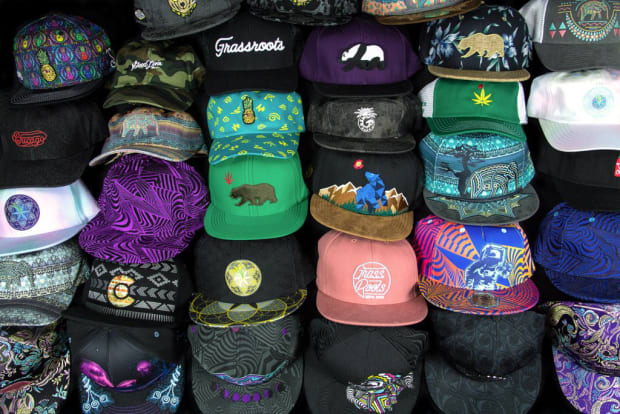
In the massive fields of Bonnaroo, or the endless sun of Electric Forest’s Sherwood Court, festivalgoes are no stranger to standing in packed crowds under the sweltering sun for hours on end. In conditions like these it’s almost a death sentence to not have some sort of portable shade, so it’s no surprise that festival fashion has strongly co-opted and elevated the lowly hat to a sometimes-legendary status.

Though the most popular style of festival hat is the flat-brim six-panel cap, any type of hat can be found at music festivals, typically the flashier the better. And just as pins have diehard fans, so too do hats, with some headwear pulling hundreds of dollars from collectors.
3. Flow Arts
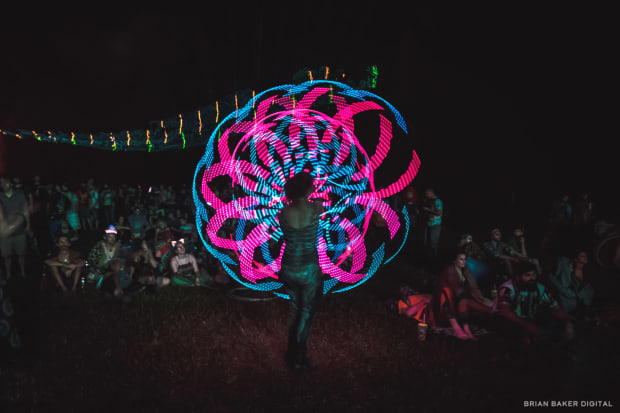
As soon as the sun sets, the rolling hills of electronic music festivals are splashed with spinning, swinging, undulating LEDs. Any music festival veteran knows that, as enticing as these lights may seem, one shouldn’t venture too close for fear of getting solidly smacked across the face by flying plastic. Though they may endanger everyone within a three-meter radius, there’s an undeniable magic and skill to the flow artists who lose themselves (and occasionally their toys) to the music in the crowd.
"Flow art" is a relatively generic term that refers to moving the body with one or more “prop” (aka flow toy) in an aesthetically pleasing way. There are many types of props, with popular ones being hoops, gloves, poi, staves… the list goes on. As individuals become more advanced with their LED props, they may graduate to fire spinning.
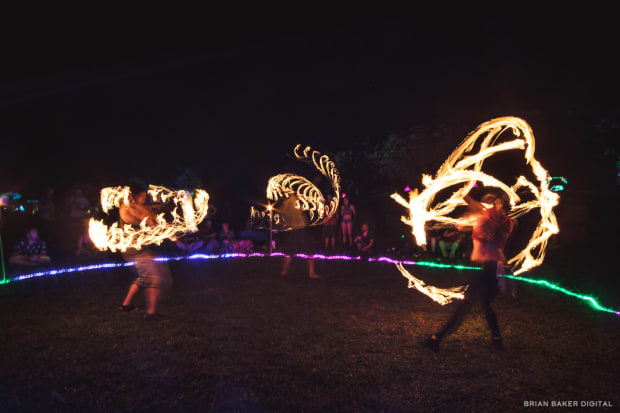
Many practitioners espouse the psychological benefits of flow arts, citing how the activity has changed or saved their lives in some way. Indeed, the term “flow art” comes from the seminal work of psychologist Mihaly Csikszentmihalyi (pronounced Chick-sent-me-high-ee), who posits that “flow” is a psychological state of intense focus and concentration, where one is “completely involved in an activity for its own sake. The ego falls away. Time flies. Every action, movement, and thought follows inevitably from the previous one.”
4. Festival Totems
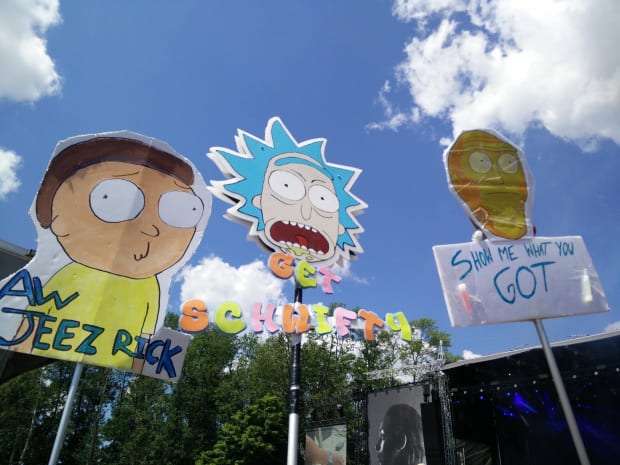
The history of music festival totems is murky at best. Some sources claim they come from the original Woodstock (1969), or perhaps West Berlin’s first-ever Love Parade (1989); even if these claims are unverifiable at best, festival totems undoubtedly share their name with sacred objects of aboriginal or indigenous groups. Though the name may smack of cultural appropriation, today’s festival totems are startlingly close to Wikipedia’s definition of the word: a “sacred object, or symbol that serves as an emblem of a group of people.”
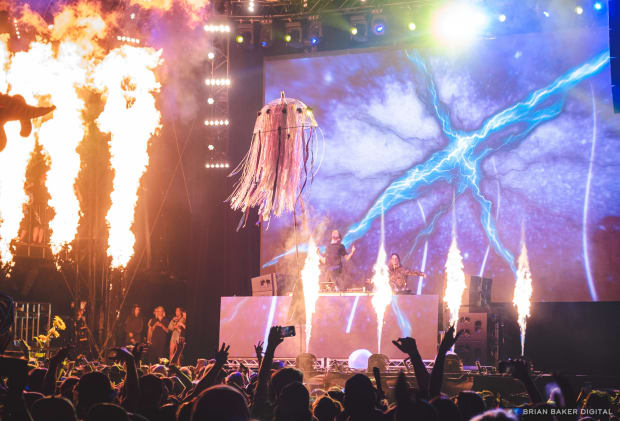
Love them or hate them, totems are an undeniable part of the DNA of American music festivals. Whereas a few years ago totems were simply memes pasted on sticks, today’s totems are often alarmingly complex, with much money and time spent developing them.
5. Shuffling
Shuffling (aka the Melbourne shuffle) originated in the Australian rave scenes of the 1980s. Recently, the dance has seen a resurgence (and fall) in the U.K., and popularity in the Netherlands, where it is derisively called the “rabbit dance.”
In 2011, shuffling came to popularity in America in large part due to the contest to be a dancer in LMFAO’s “Party Rock Anthem” music video, and since the rise of social media and electronic music festivals, shuffling and its students have become ubiquitous across the scene. Outside of EDM festivals, shuffling has become a sort of exercise routine for the children and elderly in China.
6. Kandi
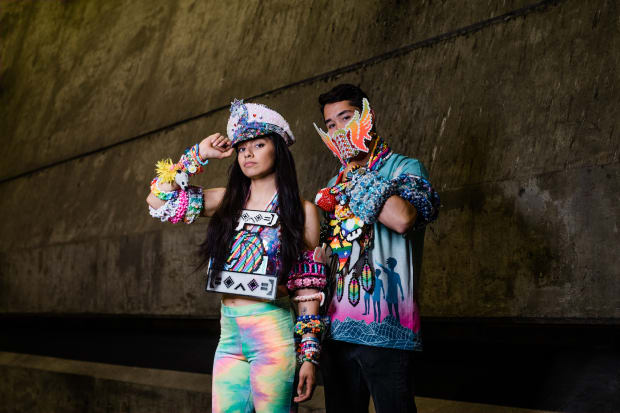
At the most basic level, kandi simply refers to the colorful plastic beaded jewelry that ravers collect and flaunt. It originated from the underground West Coast rave scene of the 1990s, and though it may have been synonymous with drug culture in its early days, kandi kids have since created their own niche that is independent of intoxicants.
These days, kandi is tied to the PLUR (Peace, Love, Unity, Respect) movement, and the exchange of kandi (which is integral to the hobby) is initiated with the “PLUR handshake.” Though kandi can be purchased pre-made, the most respected pieces are made by hand, with some pieces taking multiple days to complete.
Just as kandi creations have become more complex, so too has its ethos. To many kandi kids, each piece of kandi has its own story or meaning, and exchanging kandi is like giving a small piece of oneself to a fellow raver.
Brian Baker is a writer and photographer based out of St. Louis. You can find his portfolio here.
source https://edm.com/features/6-music-festival-subcultures
from Mad Mohawk Films https://ift.tt/3aJ7914
via IFTTT

No comments:
Post a Comment